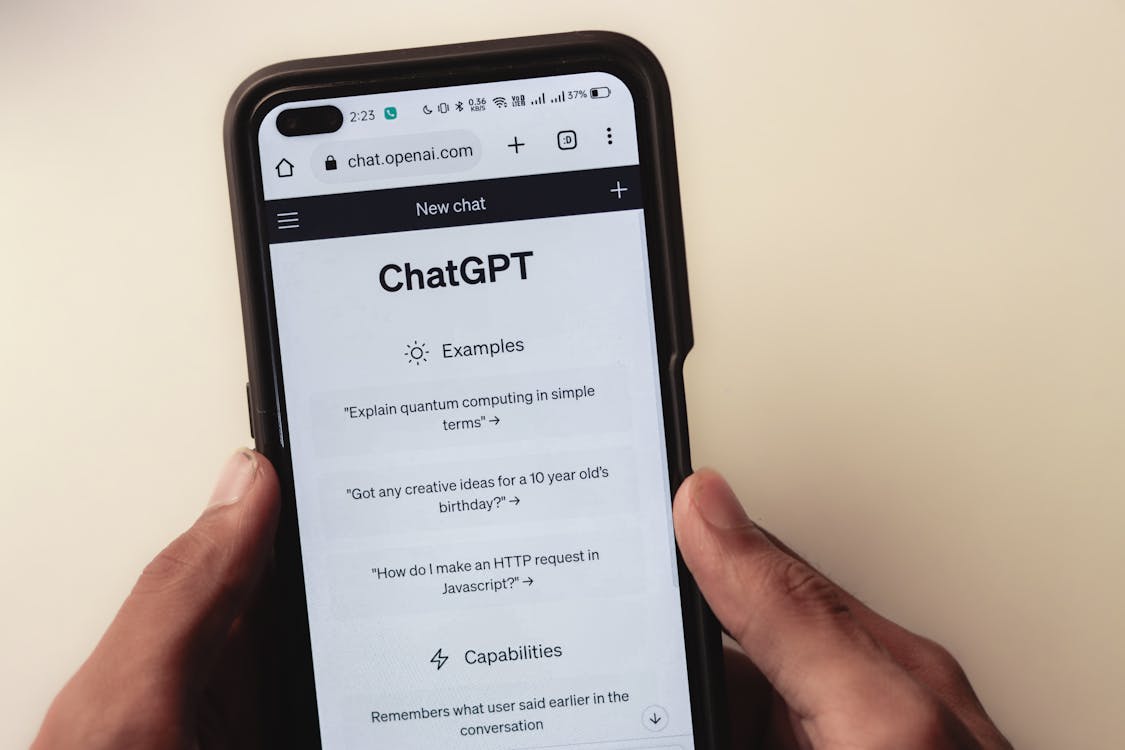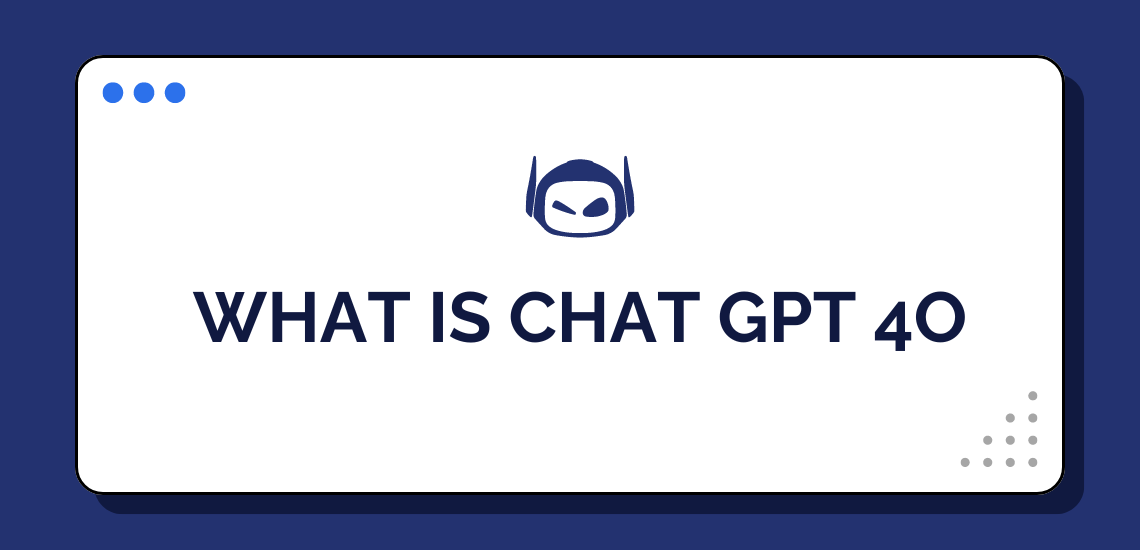ChatGPT is hands down the most popular AI-based software program on the planet. In fact, many other AI systems make use of ChatGPT to drive their processes. In this article, we’ll answer the question of what is ChatGPT 4o and how to use the software effectively.
We’ll also share the top use cases for the software such as writing high-quality text prompts that will help you get more out of the language model. Overall, the advancement of AI is occurring at a rapid pace and the technology is constantly evolving.

What Does ChatGPT Stand For?
ChatGPT stands for “chat generative pre trained transformer.” The full name isn’t as catchy but provides a better description of what the tool is all about. Here’s a breakdown of what the different parts of the name mean if you’re wondering “What does Chat GPT stand for?”
- Chat: Indicates its use in conversational contexts, which enables interactions through dialogue.
- Generative: Refers to its ability to generate text based on the input it receives.
- Pre-trained: Indicates that it has been trained on a large dataset before being fine-tuned for specific tasks.
- Transformer: Refers to the underlying architecture used in the model, which is effective for understanding and generating language.
What Is ChatGPT 4o Used For?
ChatGPT 4o is used for a number of different applications, which include customer support, content creation, programming help, and more. In this section, we’ll expand upon the different use cases to give you an idea of why ChatGPT users love this large language model.
Here is what ChatGPT 4o is used for:
- Customer support: ChatGPT 4o answers queries faster than previous models. In fact, the average response time is 320 milliseconds, which mimics that of average human response times.
- Content creation: ChatGPT 4o assists content creators by generating ideas, outlines, and drafts for articles, blogs, and social media posts. It refines writing, suggests improvements, and helps maintain quality and engagement. However, beware if you are using it for essays, as your professors may be able to detect ChatGPT use.
- Learning and tutoring: The AI chatbot serves as an educational tool by offering personalized assistance across various subjects. It explains complex concepts, summarizes academic material, and creates practice questions. ChatGPT is an excellent AI summarizer that breaks down complex topics into simple nuggets of information.
- Programming help: As a coding assistant, ChatGPT 4o supports developers by answering technical questions, explaining programming concepts, and helping debug code. Furthermore, it provides code examples and best practices in multiple programming languages.
- Language translation: ChatGPT facilitates communication by providing quick and accurate translations from one human language to the next. It helps users understand foreign content effectively and captures nuances and idiomatic expressions. This feature benefits travelers, students, and professionals needing to communicate with AI models.
- Image inputs: ChatGPT 4o now supports image inputs, allowing users to upload images for analysis or description, which greatly expands its utility beyond text.
According to The Verge, ChatGPT attracts 100 million weekly users, so you could say that it offers its users several advantages and is accepted as a legitimate critical thinking tool by many.

What Type Of AI Is ChatGPT 4o?
For those of you wondering what type of AI is ChatGPT 4o, you should know that ChatGPT 4o is a type of artificial intelligence known as a conversational agent or chatbot, which specifically leverages a model called a generative language model.
More technically, it is based on the transformer architecture, which was introduced in the paper “Attention is All You Need” by Vaswani in 2017. This architecture allows the model to understand and generate human-like text by analyzing and predicting the relationships between words in a given context.
As a generative model, ChatGPT can create coherent and contextually relevant responses based on the input it receives. Furthermore, it was pre-trained on a diverse dataset containing text from books, articles, and websites. This allows it to learn grammar, facts, and various writing styles.
After this pre-training phase, it undergoes fine-tuning to optimize its performance for specific tasks, such as engaging in conversations, answering questions, or assisting with content creation. Older versions (GPT 3.5) had fewer capabilities, but the latest version offers better answers.
One of the standout features of ChatGPT 4o is its ability to maintain context over extended interactions. This enables more meaningful and natural conversations. It can also adapt its tone and style based on user prompts to generate responses that showcase advanced reasoning.
What Is the ChatGPT 4 Usage Cap?
The ChatGPT 4 usage cap varies for free users depending on demand and the latest updates made by the team. Note that there are no usage limits for the free version of the large language model. Instead, you have a limited number of uses in the latest model.
When your quota is up, the software will indicate you’ve reached the limit and can only use an older model until you upgrade. The limits and versions of ChatGPT constantly upgrade, so you’ll need to read the latest information from the official website.
How To Use ChatGPT 4o: Our Top 6 Tips
Now that we know what is the ChatGPT 4 usage cap, let’s take a look at how to use ChatGPT 4o effectively. You can also use the best practices mentioned in this section when interfacing with other AI-based tools.
1. Craft Specific Prompts
When it comes to interacting with language models, specificity is your secret weapon. Instead of tossing out vague questions, get detailed and intentional with your writing prompts. The more context you provide, the more accurate and relevant the model’s responses.
This clarity enhances the relevance of the model’s responses and also optimizes the overall user experience. Therefore, by setting a precise direction for your engagement, you maximize the model’s potential and ensure that each interaction aligns with your intended purpose.
2. Iterate and Refine
Embrace the iterative process when interacting with a language model. Hence, if the initial response does not meet your expectations, then consider refining your prompt or posing follow-up questions. This approach allows you to guide the model toward producing more relevant and precise answers.
Additionally, you can explore different facets of a topic and uncover deeper insights by engaging in a dialogue that encourages adjustments. Also, iteration fosters a dynamic exchange, which enables the model to adapt to your evolving inquiries. It also enhances the overall quality of the interaction as you work towards achieving your desired outcomes.
3. Utilize Contextual Information
Providing contextual information within your prompts significantly enhances the quality of the model’s responses. Therefore, make sure to provide relevant background details to enable the model to generate more contextually appropriate and coherent outputs.
This practice is akin to setting the stage for a discussion, where the model can better understand your specific needs and preferences. Furthermore, contextual information enriches the dialogue and also facilitates a more productive exchange. In the end, the model aligns its responses with your expectations.
4. Stay Updated on Model Limitations
Staying informed about the limitations of the language model is essential for effective engagement. Familiarize yourself with its capabilities, including its knowledge cut-off date and potential biases that may influence its outputs. This awareness sets realistic expectations and empowers you to navigate conversations with greater clarity.
Understanding the strengths and weaknesses of the model allows for more informed decision-making, and ensures that you can optimize your interactions. Additionally, maintaining a comprehensive understanding of these limitations allows you to better appreciate the model’s utility.
Also, read about the experiences of other users to figure out why ChatGPT 4o might not work as you want. They may provide a perspective that helps you get the most out of the AI tool.
5. Review and Edit Outputs
It is imperative to review and edit the outputs generated by the language model before use. While the model can produce coherent and contextually relevant text, inaccuracies and inconsistencies may still arise. Generally, ChatGPT 4o will not make common writing mistakes, but it can get the facts wrong.
Hence, treat the model’s output as a preliminary draft that requires human oversight and refinement. This ensures that you get rid of misleading information where the training data did a bad job. This practice enhances the quality of the final product.
6. Engage in Multi-Turn Dialogues
Utilize multi-turn dialogues to foster deeper conversations with the language model. Rather than limiting interactions to single queries, engage in extended exchanges that build upon previous responses. This iterative approach allows for the exploration of complex topics and makes use of reasoning capabilities.
Furthermore, treating the dialogue as a dynamic conversation helps you uncover new angles and deepens your understanding of the subject matter. Furthermore, multi-turn interactions enhance the model’s ability to maintain context. Ultimately, this leads to more coherent and relevant outputs as the discussion progresses.

Frequently Asked Questions
How does ChatGPT 4o work?
ChatGPT 4o utilizes deep learning techniques to process and generate text. It is pre-trained on a vast amount of text from diverse sources, which enables it to learn grammar, facts, and writing styles. After pre-training, it undergoes fine-tuning to optimize its performance for conversational tasks.
What are the main improvements in ChatGPT 4o over previous versions?
ChatGPT 4o features several enhancements over previous versions, which include a better understanding of context, improved coherence in responses, and a greater ability to handle nuanced prompts.
Also, it has a larger training dataset, which contributes to its improved knowledge base. Furthermore, it has the capacity to generate more relevant and accurate answers compared to earlier versions.
How accurate is ChatGPT 4o?
ChatGPT 4o has a higher accuracy rate than previous versions, thanks to its improved training and architecture. However, it may still produce incorrect or misleading information, so verifying the outputs is important.
How does ChatGPT 4o handle sensitive topics?
ChatGPT 4o has been designed with guidelines to avoid generating harmful, biased, or inappropriate content. However, it is not infallible and may still produce unwanted outputs in sensitive contexts. Therefore, users should exercise caution and avoid discussing sensitive topics in detail.
How can I improve my interactions with ChatGPT 4o?
You can improve your interactions with ChatGPT 4o by being specific with your prompts, providing context, and asking follow-up questions. Additionally, experimenting with different phrasing and structures can also yield better results. Iterative dialogue helps refine the responses and align them with your expectations.

Consider Using Smodin AI for an Alternative Chat Bot
ChatGPT users love the free nature of the software and constant upgrades to the functionality and quality. Make sure to apply the best practices in this article to improve your understanding of how to get the most out of the tool.
Now that you know “What is ChatGPT 4o”, you can decide if these tools can be of service to you. However, you may be unhappy with the user interface or added functionality of ChatGPT. If that’s the case, then consider giving Smodin.io a try today. We offer an intuitive and advanced AI tool that competes with the best AI chatbots on the market.

